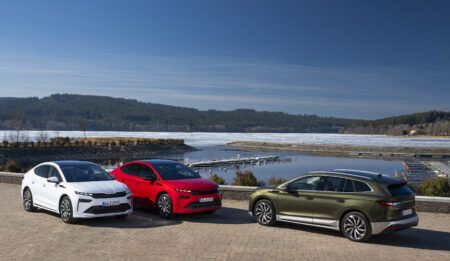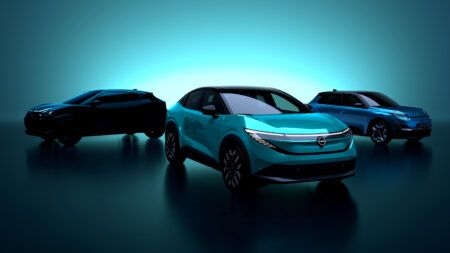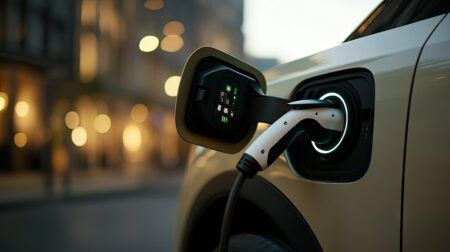Audi has released further details of its full-electric SUV, revealing more about the energy recuperation systems implemented in the e-tron, which were recently demonstrated during a run down the famed Pikes Peak run.
Marking a world-first in electric cars, the e-tron features an electrohydraulically integrated brake control system, which is capable of contributing up to 30% of the vehicle’s range. The e-tron’s energy recuperation system encompasses both the vehicle’s electric motors and the aforementioned electrohydraulically integrated brake control technology.
Three different recuperation modes are combined: manual coasting recuperation using the shift paddles; automatic coasting recuperation via the predictive efficiency assist; and brake recuperation featuring smooth transition between electric and hydraulic deceleration.
At up to 0.3g, the e-tron recovers energy via the electric motors alone, without utilizing the standard brake, meaning that energy is fed back to the vehicle battery during the majority of all braking maneuvers.
 The degree of coasting recuperation is controlled using the steering wheel paddles – at the lowest stage, the e-tron coasts with no additional drag torque when the accelerator is released, while at the highest stage, the vehicle noticeably reduces speed, enabling one-pedal driving.
The degree of coasting recuperation is controlled using the steering wheel paddles – at the lowest stage, the e-tron coasts with no additional drag torque when the accelerator is released, while at the highest stage, the vehicle noticeably reduces speed, enabling one-pedal driving.
The e-tron’s wheel brakes come into play when the driver decelerates by more than 0.3g using the brake pedal. The new electrohydraulic actuation technology makes these brakes extremely responsive. A hydraulic piston in the brake module generates additional pressure and brake force for the recuperation torque.
Depending on the driving situation, the electrohydraulically integrated bake control system determines (for each axle) whether the vehicle should use the electric motor, wheel brake, or a combination. The brake pedal is decoupled from the hydraulic system, and Audi has developed the transition from engine brake to friction brake to be undetectable.
The e-tron’s efficiency assist uses radar sensors, camera images, navigation data and Car-to-X information to detect traffic environment and the route, and presents the driver with suggestions for when to lift off the accelerator. Interacting with the optional adaptive cruise control, the efficiency assist system can also predictively control the e-tron’s acceleration and deceleration.
The e-tron’s WLTP test resulted in 248 miles of range on a single charge. On the Pikes Peak demonstration, the vehicle recovered enough energy during a 19-mile downhill section to complete the same distance again.






